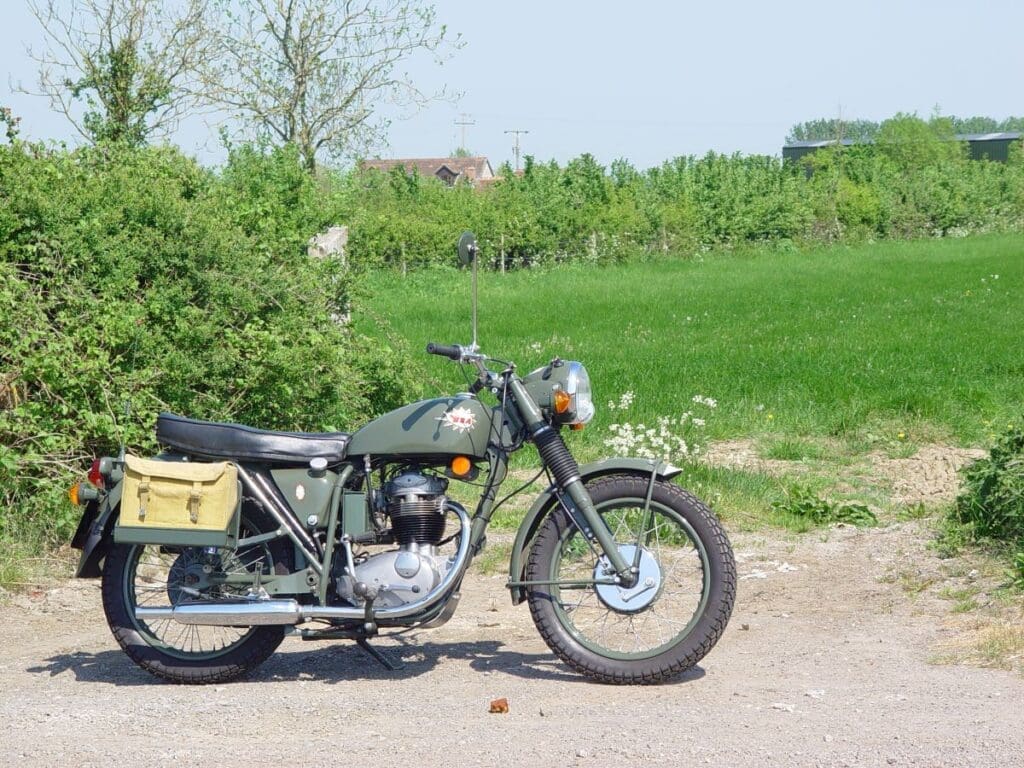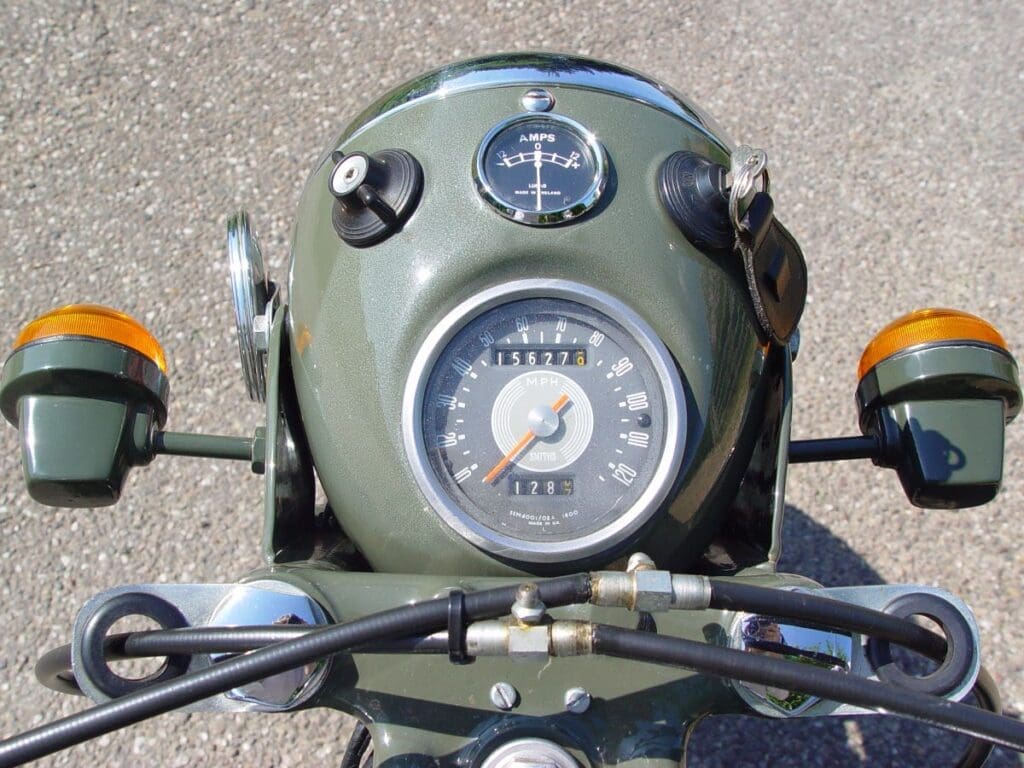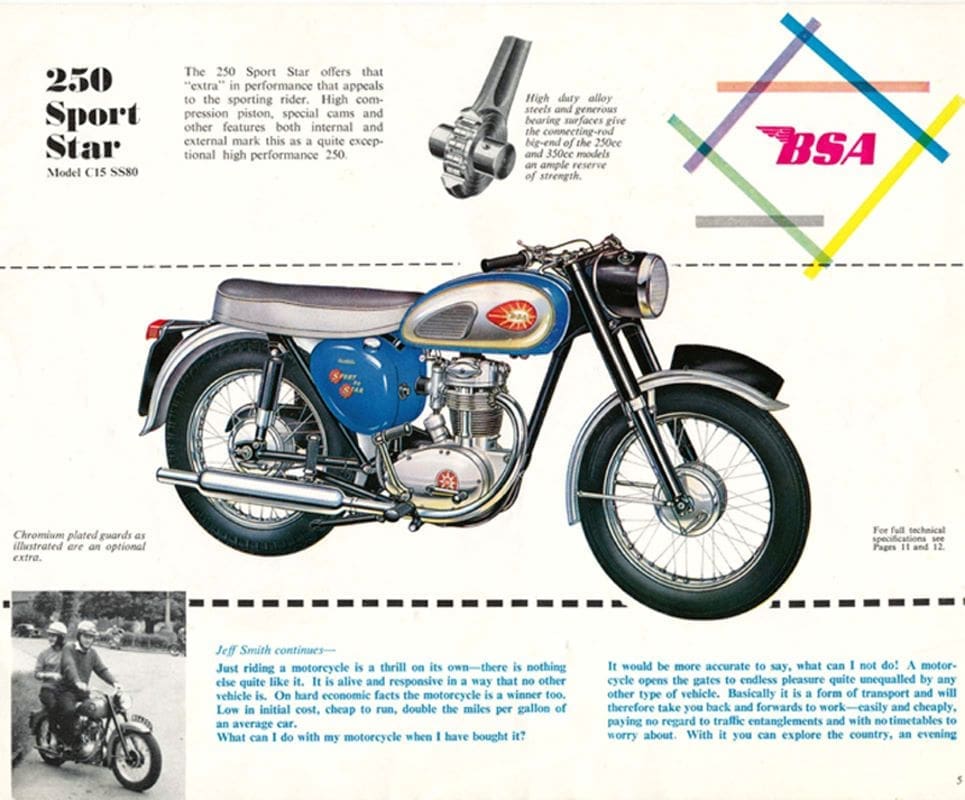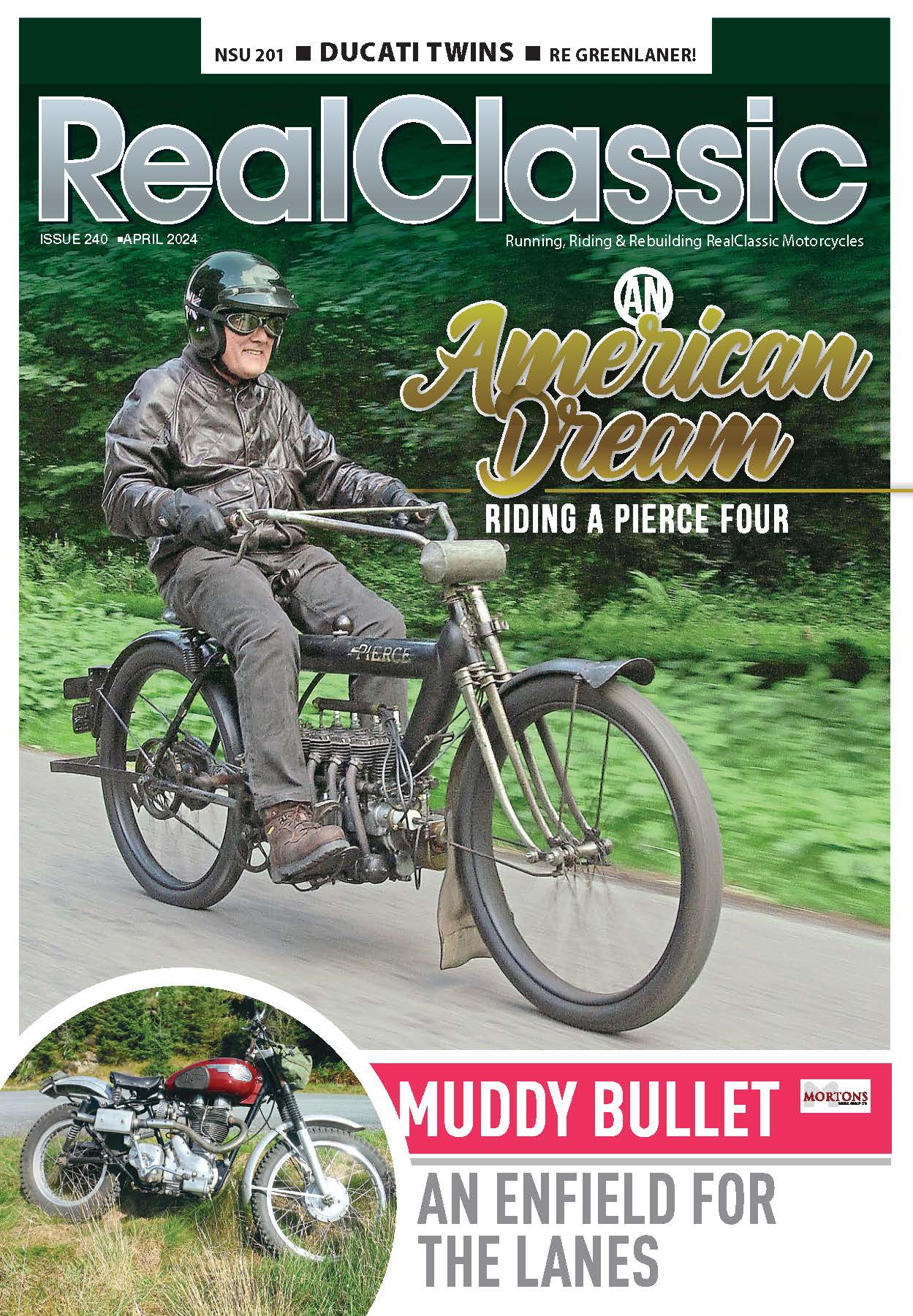The BSA C15 and B40 are famously long-lived, robust old bikes. But which is better? John Blackburn has owned both…

BSA singles often appear in RealClassic and in Paul Henshaw’s article on the BSA B40 in RC213 he mentions that ‘the B40 offers more of everything for the same size and style of machine as the C15, but with larger wheels on some.’
As I discovered to my disappointment a number of years ago, my newly-acquired B40 was hardly quicker than the C15 it was intended to replace. Maybe the B40 was faster by 5mph but no more, although my C15 may have been a particularly good one. What it did do, however, was romp up main road hills without the need to change down and this made longer journeys notably less tiring.

The B40 (pre-WD version) boasts a larger, swan-neck type frame and swinging arm than the C15. All C15s, except for the trials and scrambles had 17” wheels front and rear, while all B40s had 18” wheels. The 20” front wheel on the WD B40s does tend to make the steering more ponderous. This can be usefully improved by fitting an 18” wheel. Handling is more than adequate and, on the later WD versions, excellent, their frame being derived from the motocross machine.
In all, about 50,000 C15s were manufactured, with about 7000 being SS80 models. Probably more SS80s have survived proportionately, their being cherished more than the standard model. By contrast, prior to the WD B40 model, only about 7000 B40 models were produced, of which a mere 500 or so were SS90 models, so these latter are quite rare. Someone will know how many WD B40 machines were produced, but it must run into many thousands.
The only SS90 that I ever came across was when collecting engines/parts to build a green-laner. I was offered an SS90 engine but this was well-worn. The timing side bush was so loose in the crankcase that it just fell out when the crankcase was turned on its side. That engine was clearly well thrashed!
After being carefully rebuilt into a later ex-WD frame, it was very sweet for about 1000 miles until the fatigue from its hard previous life reasserted itself and it felt just like any tired old Brit bike.
PaulH wrote of his ex-RAF B40 that ‘the engine was a peach.’ At what speed was that, pray? The engine in my ex-WD B40 was indeed a peach up to normal army escort duty speed of 40mph. Above that speed, however, it increasingly gave the impression of wanting to shake itself to bits. On the other hand, my youth was such as to shrug off such minor inconveniences, although above 60mph it was anybody’s guess what speed the bike was travelling at – it was clear that the speedometer had no idea!

By contrast, the C15, an earlier model with a phosphor bush to support the crankshaft on the timing side, was considerably smoother and I could get the speedo needle past the 80mph mark. On one occasion it went right off the scale on a good downhill slope and without the handlebar vibrating out of my hands.
The military made a good investment when getting these B40 machines for their DRs. I used to park my bike outside my bedsitter overnight on its centrestand. If I used the sidestand then I warned the local kids not to go near the bike because it could fall on them. I demonstrated this by pushing the bike with my foot and letting it fall on the kerb. Nothing broke, nothing bent; I just picked it up and rode off.

In 20,000 miles of use, mostly as a ride to work commuter bike but occasionally for longer trips (including an epic ride from Sheffield to Scotland and back one Saturday – about 450 miles, so I learned what the letters BSA stood for!), I broke a speedo cable once. I still was able to ride the 120 miles home just pulling on the inner cable wire. On another occasion my clutch cable broke right in the centre of Sheffield. No problem. I simply knocked it into neutral on approaching each traffic light and, if I had to stop, then walked the bike away when the lights changed and knocked it into first gear at about 4mph. Changing gear without a clutch presented no problems.
Yes, it was a robust piece of kit.




